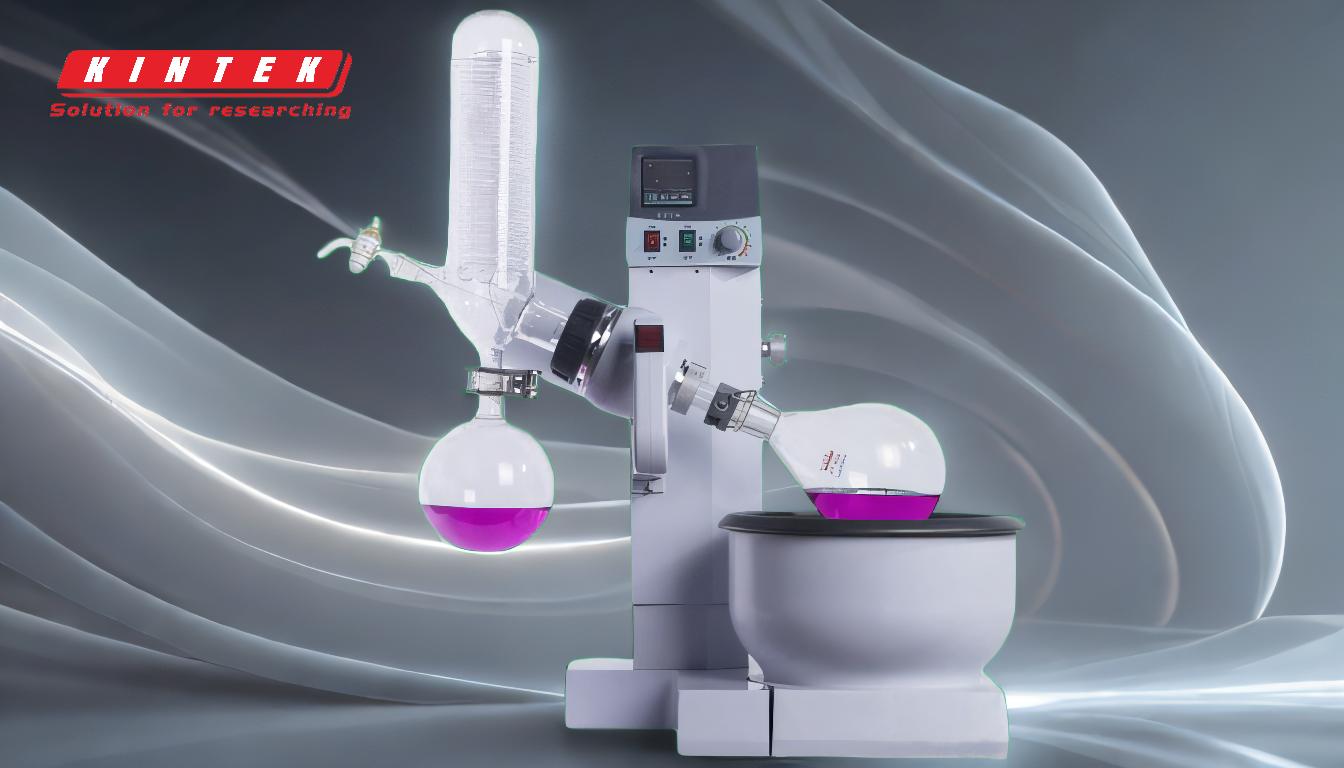The boiling point of ethanol in a rotary evaporator is not a fixed value but depends on the vacuum level applied. Under standard atmospheric pressure (760 mmHg), ethanol boils at 78.37°C. However, in a rotary evaporator, the boiling point decreases as the vacuum level increases. For ethanol extraction, the recommended vapor temperature is typically maintained between 15-20°C, which requires adjusting the vacuum level and water bath temperature accordingly. The water bath temperature is usually set about 20°C higher than the desired vapor temperature to ensure efficient evaporation. Factors such as rotation speed, condenser efficiency, and system tightness also play a role in achieving the desired boiling point and evaporation rate.
Key Points Explained:

-
Boiling Point of Ethanol Under Vacuum:
- Under standard atmospheric pressure (760 mmHg), ethanol boils at 78.37°C.
- In a rotary evaporator, the boiling point decreases as the vacuum level increases due to reduced pressure.
- The boiling point can be significantly lower than 78.37°C, depending on the vacuum applied.
-
Recommended Vapor Temperature for Ethanol:
- The recommended vapor temperature for ethanol in rotary evaporation is between 15-20°C.
- This temperature range ensures efficient recovery of ethanol while minimizing solvent loss.
-
Water Bath Temperature:
- The water bath temperature is typically set about 20°C higher than the desired vapor temperature.
- For ethanol, if the target vapor temperature is 15-20°C, the water bath should be set to approximately 35-40°C.
-
Factors Influencing Evaporation:
- Vacuum Level: A higher vacuum lowers the boiling point, allowing ethanol to evaporate at lower temperatures.
- Rotation Speed: Faster rotation increases the surface area of the liquid, enhancing evaporation.
- Condenser Efficiency: Efficient condensation ensures that the evaporated ethanol is effectively recovered.
- System Tightness: A well-sealed system maintains the desired vacuum level, which is crucial for controlling the boiling point.
-
Key Components Affecting Vacuum:
- Vacuum Pump: The power and efficiency of the vacuum pump determine the achievable vacuum level.
- Sealing Rings and Tubes: Materials like PTFE offer better wear and corrosion resistance, ensuring a tight seal.
- System Pressure Resistance: The system must balance the vacuum level with the equipment's pressure resistance to avoid damage.
-
Practical Considerations for Ethanol Extraction:
- Heat Sensitivity: Ethanol is relatively heat-sensitive, so precise control of the water bath temperature and vacuum level is essential to prevent degradation.
- Evaporation Rate: The rate of evaporation can be optimized by adjusting the rotation speed, vacuum level, and water bath temperature.
- Condenser Temperature: The condenser should be kept at a low temperature to ensure efficient recovery of the evaporated ethanol.
By understanding and controlling these factors, you can effectively determine and manage the boiling point of ethanol in a rotary evaporator, ensuring efficient and safe extraction.
Summary Table:
| Factor | Details |
|---|---|
| Boiling Point (760 mmHg) | 78.37°C |
| Recommended Vapor Temp | 15-20°C |
| Water Bath Temp | 20°C higher than vapor temp (e.g., 35-40°C for 15-20°C vapor temp) |
| Key Influencing Factors | Vacuum level, rotation speed, condenser efficiency, system tightness |
| Heat Sensitivity | Ethanol is heat-sensitive; precise control of temperature and vacuum is key |
Need help optimizing your rotary evaporator setup? Contact our experts today for tailored solutions!










